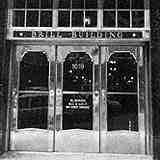 The famous Brill Building The famous Brill Building So many hits came from the writers associated with the Brill Building that to attempt any comprehensive list would be nearly impossible. Those unfamiliar with the Brill Building itself will be no stranger to the songs created within its walls. Visitors to Spectropop's Brill Building section will find pages upon pages on the subject, with an individual section for each of the well known Brill Building writing teams and the key artists they wrote for. While the term "Tin Pan Alley" holds the stigma of being contrived and manipulative, in fact the writers at the Brill Building had a lasting influence on pop music, and their songs' lyrical and melodic strengths gave American Pop Music a higher quality and standard to which future artists and writers would aspire. >>>Presented by Spectropop |
For Girl Groups Only! Visitors will find a number of in-depth essays on the girl groups phenomenon of the 60s, indexes to comprehensive reference material on all the individual girl groups and female vocalists, and links to audio clips for many classic recordings of the genre. Visitors are invited to use this guide to numerous internet pages and on-line services available on the genre, with a brief introduction to each section of Spectropop's Girl Groups. >>>Presented by Spectropop and Cha Cha Charming |
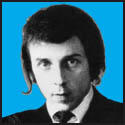 Spectropop's Guide to 60s Record
Producers Spectropop's Guide to 60s Record
Producers "A Record Producer is the guy in the studio that yells the loudest. " "Record Producers are all wannabe artists." "A definition of Record Producer is the guy who orders pizza into the studio." "Whatta we need a producer for anyway? We can do it ourselves..."
Spectropop salutes the record producers of the 60s. Phil Spector, Joe Meek, Bob Crewe, Leiber and Stoller, Shadow Morton, Bones Howe, Jack Nitzsche... These names and others are so closely associated with pop records of the 60s that the artists are sometimes secondary to the sound on many 60s records.
>>>Spectropop's Producer Guide |
Spectropop's Guide to Recording Studios and Studio Musicians of the 60s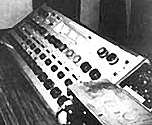 This section is still in the planning stages and is currently unavailable. Information on these pages will focus on the studio musicians who regularly played on treasured hits and obscurities from the 60s. Debuting with a full feature on Gold Star Recording Studios, in future Spectropop will take a look at the studios where these records were held. >>>Presented by Spectropop |
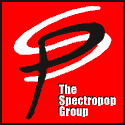 Spectropop's Guide to the best Artist web sites Spectropop's Guide to the best Artist web sites Not all great 60s pop, rock and R&B records were recorded by the Girl Groups or written at the Brill Building. Visitors who are researching certain artists from the era are encouraged to check the alphabetical listings here. With extensive pages about individual pop acts and links to an exhaustive number of individual performers and groups of the 50s and 60s, many returning guests refer to this page for easy and quick access to information on particular artists. Visitors who do not find any listing on the artist they are seeking may write to spectropop-owner@yahoogroups.com with suggestions for additions. >>>100s of Legendary 60s rtist web sites |
Complete Record Label Album Discographies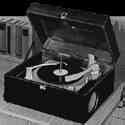 The discographies presented here represent a lot of original research done long before the internet, along with some recent research in order to put this section of the Web Site on-line. Mike Callahan created these comprehensive album discographies and published them here for all to use and enjoy. With the research capabilities of David Edwards and Patrice Eyries, in addition to readers' and internet friends' contributions, each label discography is a work in progress, helped greatly by "discography consultants" such as Bob Hyde and Tim Neely. Chart information is taken from Joel Whitburn's Top Pop Albums 1955-1992, which reflect the US Billboard charts. >>>Presented by Both Sides Now |
 Psychedelic Era Archives Psychedelic Era Archives In the mid-60s, pop groups such as the Beatles, Beach Boys, Byrds and Rolling Stones were in fierce competition to outdo the others' latest records. Each experimented with different instruments and alternative recording techniques. At precisely this moment in time, folk musicians, armed with drums and electric instruments, crossed over into the highly competitive pop arena, and their arrival brought a more introspective tone to the lyrics of pop hits. It was a fabulous time in pop music, when Top 40 radio played records with names like "7 & 7 Is", "Happenings Ten Years Time Ago", "Good Vibrations", Whiter Shade of Pale" and "Eight Miles High". But the rush of 1966 that segued into the Psychedelic Summer of 1967 was not to last. Ironically, the early psyche-pop movement was itself a contributor to its own demise; experimentation led to the sub-genre of psychedelia which, by definition, was destined to remain outside of the mainstream. But for a moment in time, psychedelia and pop music were compatible. This interesting genre is archived in great detail here. >>> Psychedelic Archives |
A Brief History of Pop & Rock Music in the 1960'S
 There were also the smaller, "rhythm combo" groups, usually of only four or five players. Their tunes were popular on the jukeboxes of the day, but were not considered artistically important which is why we have mostly forgotten them today. The recent Broadway show "Five Guys Named Moe," which highlights the career of Louis Jordan, tells about one of the most popular rhythm combos of the day. Nat King Cole also had a small jazz combo that had popular success, before he became a Sinatra-style pop ballad singer in the '50's..." >>> Essay by Jack Madani |
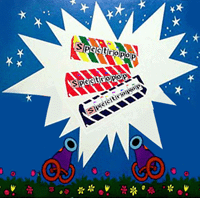 |
![]()